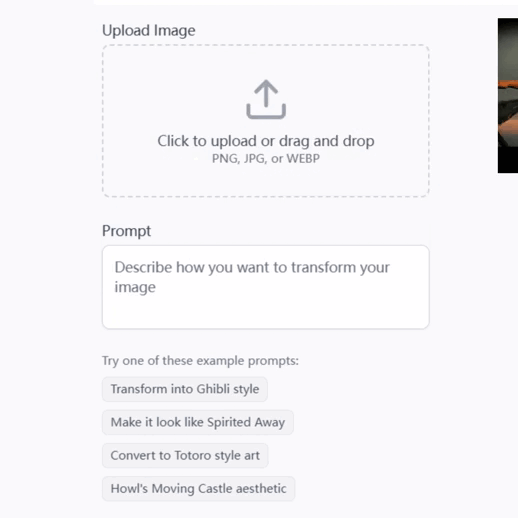
Ingredient Decoder - Ingredient Insight Tool

Welcome! I'm here to help decode your food ingredient labels.
Decode Ingredients with AI
Can you explain the meaning of the code E320 in food labels?
What are the potential health effects of using color additive E129?
Describe the purpose of preservative E202 in packaged foods.
How does emulsifier E322 function in food products?
Get Embed Code
Understanding Ingredient Decoder
Ingredient Decoder is a specialized tool designed to demystify the complex world of food additives, colorings, preservatives, and other ingredients often found in food products. It's built to bridge the gap between scientific data and consumer understanding, making it easier to navigate ingredient lists that can sometimes feel overwhelming. By translating alphanumeric codes and scientific terms into understandable language, Ingredient Decoder empowers individuals to make more informed decisions about their food choices. An example of this in action could be a consumer puzzled by the term 'E621' on a snack's ingredient list. Ingredient Decoder can reveal that E621 stands for monosodium glutamate (MSG), a common flavor enhancer, including its uses, safety assessments, and potential dietary considerations. Powered by ChatGPT-4o。

Core Functions of Ingredient Decoder
Decoding Additives
Example
E330
Scenario
A user encounters 'E330' on a beverage label. Ingredient Decoder identifies it as citric acid, explaining its role as a natural preservative and flavoring agent, and discusses its common use in sodas, juices, and candies.
Safety and Dietary Information
Example
Aspartame
Scenario
Upon entering 'Aspartame', Ingredient Decoder provides details on this artificial sweetener's safety, approved uses, and mentions its controversy. It also highlights dietary considerations for individuals with phenylketonuria (PKU).
Comparison of Similar Additives
Example
Calcium Ascorbate vs. Ascorbic Acid
Scenario
A user curious about the difference between calcium ascorbate and ascorbic acid in vitamin C supplements receives a comparative analysis, including their distinct benefits and which might be more suitable for specific health needs.
Explanation of Food Labeling Standards
Example
Organic Labels
Scenario
When queried about organic labels, Ingredient Decoder outlines the criteria a product must meet to be labeled as 'organic', touching on regulations, certification processes, and how these standards vary by region.
Who Benefits Most from Ingredient Decoder?
Health-Conscious Consumers
Individuals focused on maintaining a healthy lifestyle through informed food choices. They benefit from understanding what they consume to avoid additives that might conflict with their dietary goals or preferences.
People with Dietary Restrictions
This includes anyone with allergies, intolerances, or conditions like PKU, who need to avoid certain ingredients strictly. Detailed knowledge about food additives helps them navigate their dietary restrictions more safely.
Educators and Health Professionals
Those who educate others on nutrition and health can use Ingredient Decoder as a reliable resource to provide accurate, understandable information about food additives and their impact on health.
Curious Consumers
Anyone interested in knowing more about what's in their food, beyond the basic nutritional facts. This group appreciates the empowerment that comes with understanding the often complex language of food labeling.

How to Use Ingredient Decoder
Start Exploring for Free
Begin your journey on yeschat.ai to explore Ingredient Decoder with a free trial, no sign-up or ChatGPT Plus required.
Identify Your Needs
Consider what you're looking to learn or solve. Are you decoding additives in food, researching preservatives, or exploring food colorings?
Prepare Your Query
Gather any product labels or ingredients lists you're curious about. Clear photos or exact text descriptions of ingredients will yield the best results.
Ask Your Question
Submit your query directly related to food additives, colorings, or preservatives. Be as specific as possible for detailed insights.
Review and Apply
Analyze the provided information for your query. Apply the insights to make informed decisions about your food and ingredient concerns.
Try other advanced and practical GPTs
Ingredient Inspector
AI-powered ingredient safety analysis

Ingredient Guru
AI-Powered Product Matching Made Easy

Shampoo Ingredient Explorer
Decoding Shampoo Ingredients with AI

Ingredient Insight
Unraveling Ingredients with AI

Ingredient Scanner
Decipher Ingredients, Optimize Health

The Secret Ingredient
Transform Images into Recipes Instantly

Ingredient Wizard
Deciphering Ingredients with AI Power

Ingredient Buddy
Uncover the secrets behind ingredients with AI

Ingredient Analyzer
Unlock Skincare Secrets with AI

Ingredient Innovator
AI-powered Culinary Assistant

Ingredient Analyst
Decipher ingredients with AI precision

Video Rank Booster Pro
Elevate Your Video's Reach with AI

Ingredient Decoder Q&A
What can Ingredient Decoder identify?
Ingredient Decoder can identify a wide range of food additives, colorings, and preservatives. It can provide detailed information about each, including their common uses, potential health effects, and regulatory status.
How accurate is the information provided?
The information is sourced from reputable databases and scientific studies, ensuring a high level of accuracy. However, as research evolves, users are advised to consult multiple sources for the most current data.
Can Ingredient Decoder suggest natural alternatives?
While Ingredient Decoder focuses on providing detailed information about specific ingredients, it can often include information about natural alternatives or less harmful options when available.
Is Ingredient Decoder suitable for academic research?
Yes, it's a valuable tool for academic research, offering detailed, scientific-based information on food additives, which can be cited in research papers and projects.
How can I improve the accuracy of my queries?
For best results, provide clear, detailed descriptions or images of the ingredients list. Specify the context of your inquiry, such as dietary restrictions or specific health concerns.






